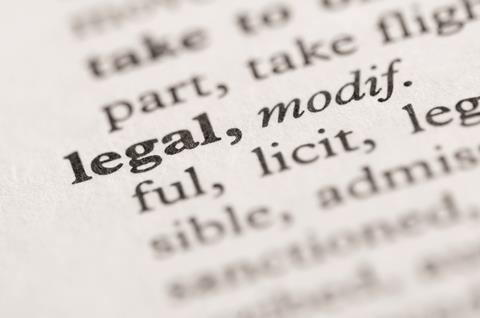Recovering the costs of litigation can be a complex process subject to a variety of constraints
Two recent decisions of Mrs Justice O‚ÄôFarrell in the Technology and Construction Court (TCC) highlight the costs of litigation, and the importance of their recovery by claimants. Costs are stated to ‚Äúfollow the event‚ÄĚ, which means that the claims have to succeed if there is to be any cost recovery.

Many construction disputes, at least initially, are referred to adjudication, which does not allow for any recovery for the costs of a successful referring party. Furthermore, the intention of the TCC Pre-Action Protocol is to encourage dialogue between the parties, leading to early settlement. However, in some instances, litigation is perceived to be unavoidable. The separate cases of Ohpen Operations UK Ltd vs Invesco Fund Managers Ltd (24 September 2019) and Hochtief (UK) Construction Ltd and Volkerfitzpatrick Ltd vs Atkins Ltd (11 November 2019) are illustrative of the litigation costs that may be incurred. The claimants in both cases were successful and recovered their costs, albeit there were challenges to their entitlements.
Reference was made to an earlier case in which the judge commented that litigants were free to pay for Rolls-Royce service but not to charge it all to the other side
In the Ohpen case the court had to assess the costs of the successful claimant. The court only allows recovery of costs that have been reasonably incurred and are proportionate to the matters at issue. Reference was made to an earlier case ‚Äď RBS Rights Issue Litigation (2017), where the costs exceeded ¬£100m ‚Äď in which the judge commented that litigants were free to pay for Rolls-Royce service but not to charge it all to the other side. The technical nature of the particular dispute in Ohpen justified the appointment of solicitors with the appropriate level of skill and expertise. The court considered this should lead to the proper and efficient conduct of the litigation. Solicitors with this skill and expertise were entitled to charge the market hourly rate for their area of practice. Reference was made to the Supreme Courts Costs Office guideline rates, which were fixed in 2010 (reviewed but unchanged in 2014). The maximum hourly rate allowed was ¬£409 (referred to a pay band A) for solicitors and legal executives with over eight years‚Äô experience, when based in central London. Whereas this may appear a high enough rate, the court acknowledged that it was incorrect to rely upon the rates fixed in 2010. It was therefore prepared to allow recovery at higher rates that were more appropriate more reflective of the current market rates.

The claimants in the Hochtief case were also successful. They recovered more than had been included within a Part 36 of the Civil Procedure Rules (CPR) offer to settle, made at an earlier stage. The claimants obtained judgment, which included interest, for £879,847.76 on 31 July 2019. On 19 May 2017, more than two years previously, they had made an offer to settle their claims for £875,000 including interest. Thus, they had recovered more than the Part 36 offer albeit by the small margin of £4,847 only. Consequently, by operation of Part 36 CPR, the claimants could seek interest at the higher rate of 6% above base rate from 10 June 2017 to 31 July 2019, costs on an indemnity basis from 10 June 2017, interest on those costs at an enhanced rate of 6% above base rate from 10 June 2017 and an additional sum of £65,123.77. The last payment of £65,143.77 was consistent with an entitlement to be awarded an additional sum as damages, so long as this did not exceed £75,000.
This small margin of success did not displace the operation of Part 36
The defendant, Atkins, requested the court to make an ‚Äúissues-based or proportional costs award‚ÄĚ. This should reflect the small margin only by which the Part 36 offer had been exceeded. The claimants had also failed entirely in one of their claims relating to an underpass. However, this small margin of success did not displace the operation of Part 36 albeit the court acknowledged that ultimately the rules were subject to the exercise of its discretion. Having exercised its discretion, the court‚Äôs conclusion was that Atkins should pay to the claimant 85% of its costs, such costs to be the subject of a detailed assessment on the indemnity basis.
Finally, the judge commented on the relevance of the relevant costs budget made at the case management conference, in which a projected costs budget in December 2017 of £353,231 had been approved as part of a total costs budget of £650,998.74. The costs now claimed were significantly higher, in the sum of £1,075,441.71. The judge acknowledged that the amount ultimately to be assessed was an issue to be left to the costs judge.
A distinguished judge once commented lightheartedly that litigation was like betting on the horses but without the same degree of certainty. We will at least agree that the costs of litigation mean that the stakes are high.
Jeffrey Brown is a partner at Howard Kennedy



























No comments yet